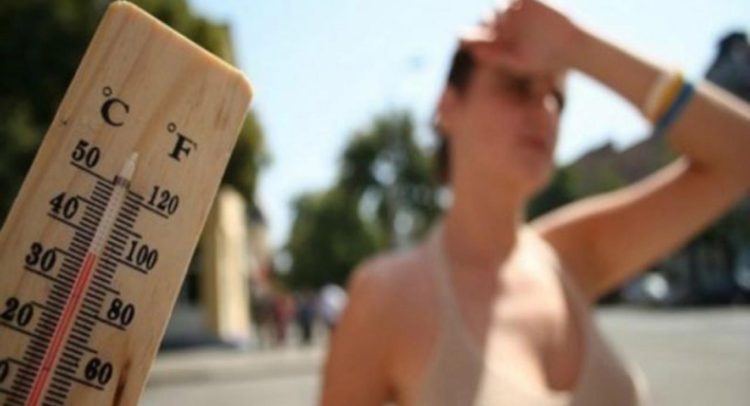Heat stroke occurs when the body stops maintaining its normal temperature and reaches 40 ° C (104º F) or more and is considered a medical emergency…//
Exposure to high temperatures, such as those now occurring in much of Mexico, can lead to three health complications in people: sunburn, exhaustion and “heat stroke”; the latter is the most serious and necessarily requires medical attention, said the Ministry of Health of Yucatan (SSY).
In addition to this, gastrointestinal diseases also increase due to the consumption of water that is not purified, water in the streets and food in poor condition.
For this reason, during the 27th epidemiological week in the state there are a total of 107 thousand 383 accumulated cases of gastrointestinal diseases and a single case of heat stroke.
Yesterday, Conagua announced that the temperature in the Yucatan capital exceeded 40 degrees Celsius (104º F) for the third consecutive day.
According to the report, at the automatic station of the Regional Hydrometeorological Center of Mérida (west of the Yucatan capital), a maximum temperature of 41.3 degrees Celsius was recorded at 4:00 pm Wednesday.
This high matched the most extreme of the year that occurred last April 8, when 41.3 degrees Celsius was also recorded.
Meanwhile, the Meteorological Observatory of Mérida, in the south of the Yucatan capital, registered yesterday a maximum temperature of 38.1 degrees Celsius.
Because of this, it is necessary to be careful with the ravages of high temperatures and especially pay attention to heat stroke.
A report from the SSY said that during this hot season, the most frequent health damages are: water and foodborne diseases, including cholera; heat stroke, heat exhaustion, sunburn and gastrointestinal diseases, the latter increase during this season derived from the consumption of contaminated food, this is mainly due to increased susceptibility of food to contamination and deterioration.
In the case of sunburn, it appears after exposure to the sun or some type of ultraviolet light for a considerable period of time, and the damage will depend on the type of skin and the time of exposure. Its symptoms, among others are: redness of the skin, pain and swelling, blisters, fever and headache.
Among the recommendations, you should take a shower or bath, use soap to remove the fat that clogs the pores and prevent the body from cooling, cover the blisters with sterile and dry gauze and seek medical attention.
Heat exhaustion occurs as a result of excessive fluid loss.
Your symptoms: heavy sweating, cold, pale or flushed skin, weak pulse, high temperature, dizziness or fainting, nausea, vomiting and fatigue.
The recommendations are: lay down, loosen or remove the clothes; put fresh and wet cloths on the forehead, abdomen and armpits; fan yourself; move to a cool place; drink 1/2 glass of fresh water in sips, every 15 minutes; If there is nausea or vomiting, avoid taking any liquid or food and seek medical attention.
Heat stroke is when the body stops maintaining the temperature at 37 ° C, reaching 40 ° C or more. It is considered a medical emergency.
Among the symptoms to note: temperature greater than 40 ° C; hot, red and dry skin; fast and weak pulse; state of confusion or loss of consciousness; convulsions; shaky and shallow breathing, and lack of sweating.
The recommendations are: take the person to a cool place; take off his clothes; put fresh and wet cloths on the forehead, abdomen and armpits; try to give him a bath in fresh water; if possible, use fans and / or air conditioning to cool the person and if necessary take the person to a hospital.
The vulnerable groups are: children under 6 years old, adults over 65 years of age; and people with overweight, dehydration status, sweat gland problems and heart disease.
During the heat wave
General recommendations
1.- Choose the first hours of the day to carry out outdoor activities and sports.
2.- Avoid exposing yourself to the sun or doing physical activities during the hours of highest radiation between 11:00 am and 4 pm.
3.- Increase the consumption of liquids, preferably water.
4.- Dress in light clothes, light colors.
5.- Use a hat or umbrella to protect yourself from the sun.
To avoid Diarrheal diseases:
1.- Washing of hands before eating and after going to the bathroom.
2.- Wash with water and soap, and disinfect with chlorine or colloidal silver, fruits and vegetables that are consumed raw.
3.- Consume chlorinated, boiled or disinfected water.
4.- Eat food immediately after its preparation to avoid its decomposition.
5.- Never stay inside a closed vehicle for long periods of time.
The tally so far:
-107 thousand 383 accumulated cases of gastrointestinal diseases
-A single case of heat stroke.
Text: Esteban Cruz Obando
Photo: Archive










